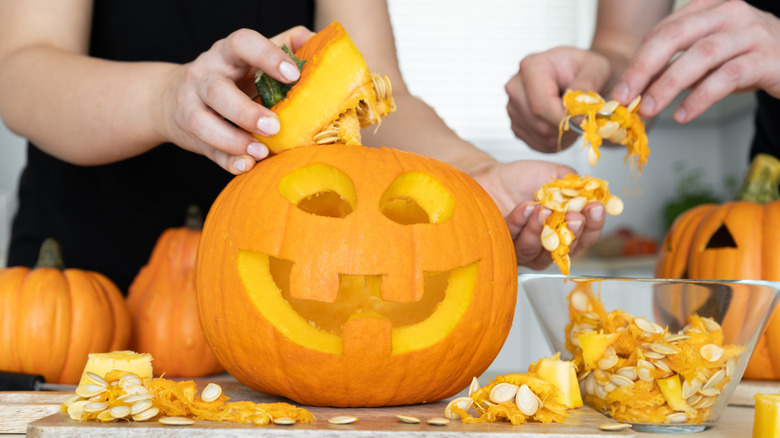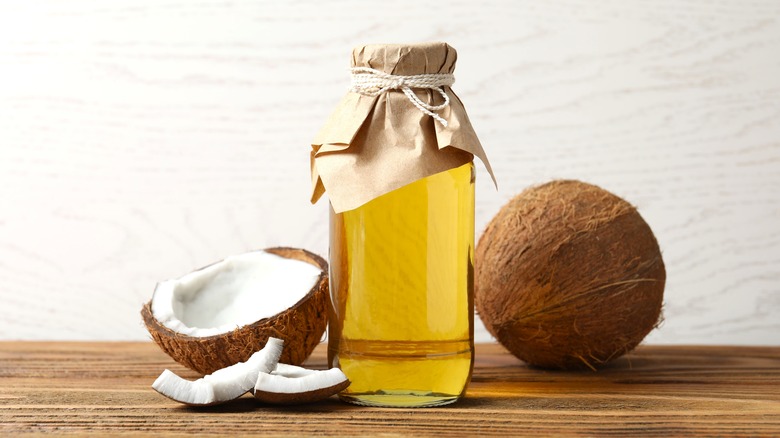The Kitchen Ingredient That Can Help Prevent Your Fall Pumpkins From Getting Moldy
The yearly tradition of decorating with unique fall pumpkins is a ton of fun, but eventually it gets ruined by decay. Whether you have painstakingly carved a masterpiece or simply placed a handsome gourd on your front porch, seeing your autumn decor begin to rot, shrivel, and develop fuzzy patches of mold after just a few days is super frustrating. This fast and inevitable decline is caused by a combination of factors like the pumpkin's natural moisture escaping and the intrusion of bacteria and mold spores, which thrive on surfaces like this. But before you reach for harsh chemicals or give up on your decor, there is an effective, all-natural solution sitting right in your kitchen: coconut oil.
This common cooking ingredient acts as a two-pronged defense system for preserving both your whole and carved pumpkins. First, it forms a thin protective seal over the pumpkin's skin and, more importantly, the exposed raw edges of any carved area. This clever barrier locks in the pumpkin's moisture, which is key to stopping it from drying out, shriveling, and eventually collapsing. When the pumpkin maintains its hydration, this slows down decomposition so you have a few extra days to enjoy it.
Second, the oil's barrier prevents mold spores and bacteria from settling directly onto the gourd's carved parts and interior. As an added bonus, coconut oil is completely nontoxic, biodegradable, and eco-friendly, making it a safe alternative to petroleum jelly or commercial sprays (though they work the same) in case pets or kids get near your gourds on Halloween.
How to apply coconut oil to your pumpkin
The best part of this method is how easy it is. Start by making sure your pumpkin is clean, wiping away any dirt or debris. For whole pumpkins, simply add a thin, even layer of coconut oil to the full exterior rind using a paper towel or old cloth. This will give it a nice, subtle sheen while guarding it against the elements. For carved jack-o'-lanterns, the application is even more important. First, make sure you get all of those moist, residual guts out, since they are a major source of rot, and thoroughly clean the inside. Then, once you carve it, apply the oil generously to all the raw, cut edges and to the full interior. You may need to reapply it after a few days (especially if it rains) for maximum pumpkin protection against bugs, mold, and more.
Coconut oil is a powerful tool for this (and for many other hacks around the house), and it works even better when combined with a few other basic preservation steps. For one, always store your gourds in a cool, dry, shady spot since direct sunlight and high heat will speed up any decay. Also, we recommend elevating your pumpkin slightly off the ground via a few stones or pieces of wood; this allows for some air circulation and stops moisture from gathering at the base. And one last non-negotiable step? Since coconut oil is flammable, you'll need to switch to a flameless LED candle instead of a traditional wick candle to illuminate your jack-o'-lantern. By combining coconut oil with good final placement, you can enjoy your pumpkins far longer than you did last year.

